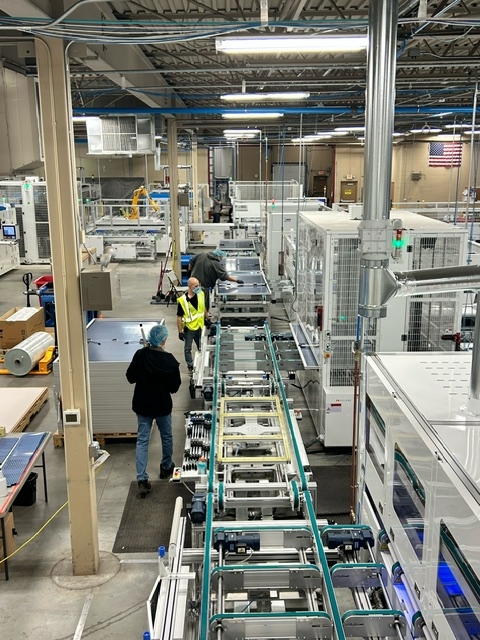
Heliene is investing $10 million to expand its Minnesota solar manufacturing facility.
Solar company Heliene Inc. announced on Tuesday that it has invested an additional $10 million in its original Mountain Iron, Minn., solar modules manufacturing and assembly line, creating more than 130 new jobs in the Iron Range. The company, which has manufacturing facilities in both the United States and Canada, first installed its Mountain Iron production line in 2018. Heliene’s most recent expansion will double its capacity.
“We’re proud to be delivering on our commitment to grow our U.S.-based manufacturing capacity and create new clean energy jobs with the refurbishment of Minnesota Line One,” said Martin Pochtaruk, CEO of Heliene. “Recent funding and federal incentives are helping us grow our facilities and workforce to keep up with historically high demand for domestically produced solar PV modules. We’re thankful to our clients for enabling us to grow rapidly, while maintaining the customer-first approach Heliene has become known for.”
Heliene will further grow its American manufacturing capacity with plans to develop a new production facility in the greater Minneapolis area in 2024. But it’s far from the only solar company that’s betting on U.S. factories.
Enactment of the Inflation Reduction Act (IRA) was a critical inflection point for the American solar industry, which released billions of dollars in tax subsidies and incentives for clean energy manufacturing. Under the Biden administration, private companies have invested more than $74 billion in clean energy manufacturing, including more than $10 billion in solar manufacturing.
All of this development in the U.S. solar sector will help the nation meet ambitious climate goals, but American workers also stand to benefit. The global solar manufacturing industry could double its direct manufacturing jobs to one million by 2030, the International Energy Agency forecasts in the Special Report on Solar PV Global Supply Chains. The U.S. could capture a great deal of that job growth if policymakers address Chinese solar manufacturers’ unfair trade practices.
Almost a year ago, the Commerce Department announced that it had found that four of eight solar companies that the department investigated were sending their manufactured solar cells and modules through Southeast Asian countries for minor processing before exporting those same goods to the United States in order to evade U.S. antidumping and countervailing duties. Despite these findings, Commerce cannot impose duties on the Southeast Asian countries that are participating in this circumvention until June 2023 when a 24-month tariff exemption granted by executive order for these countries expires.
Pressures from Chinese solar overcapacity are still felt. A report from the Solar Energy Industries Association notes in its quarterly report that China’s influx of solar modules is distorting the global market with ripple effects impacting the U.S. market. Solar imports in America have “more than doubled through August to $10 billion from about $4 billion a year earlier, according to the U.S. International Trade Commission,” Reuters reported last month.
The United States, alongside Germany, Switzerland and Japan, once led the world in solar manufacturing. But that lead was lost as China seized upon its opportunity to claim dominance in the clean energy market and flooded the world with artificially cheap solar modules. As the IEA highlights in its report, China holds 80% of the global solar manufacturing market share with all top 10 solar equipment manufacturers located in the country.
The American solar industry has boomed since the IRA, but China threatens its success. Once solar tariff exemptions expire this summer, circumvention duties may be applied to Chinese solar products that have been routed through Southeast Asia. This trade enforcement could play a formidable role in ensuring U.S. solar’s continued growth.
